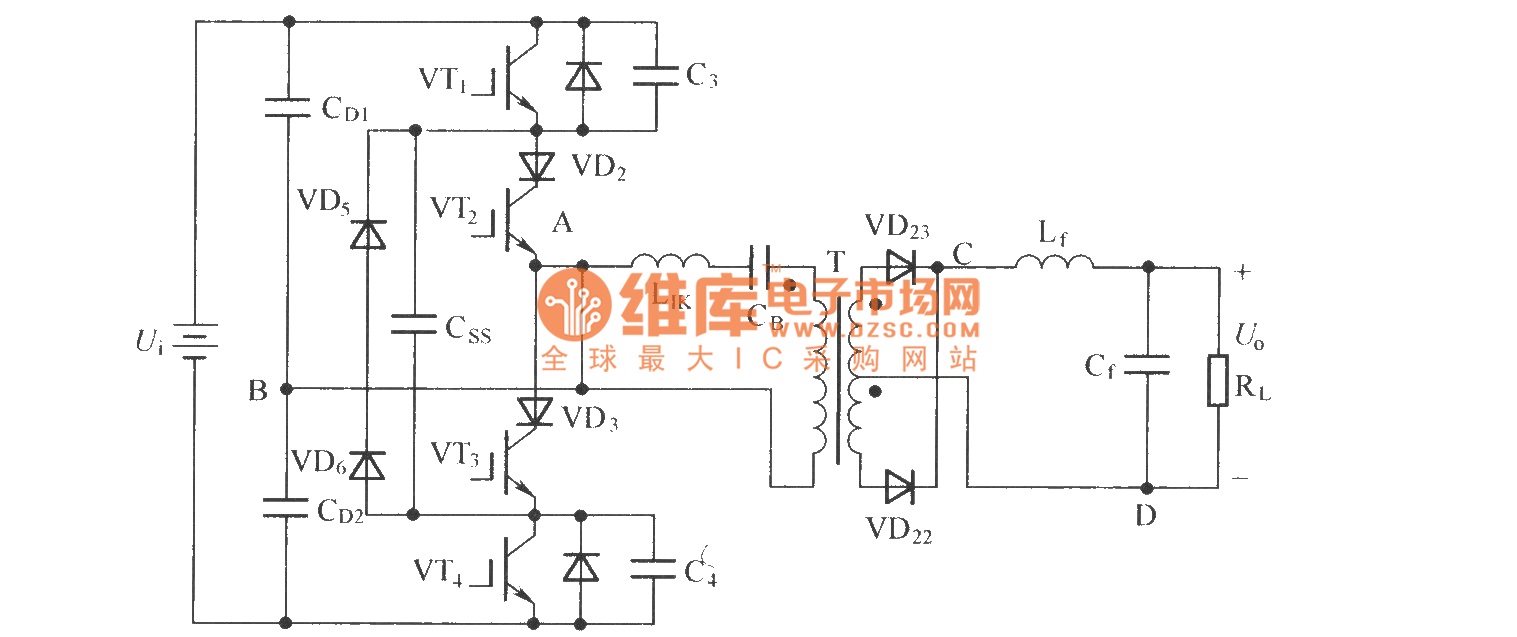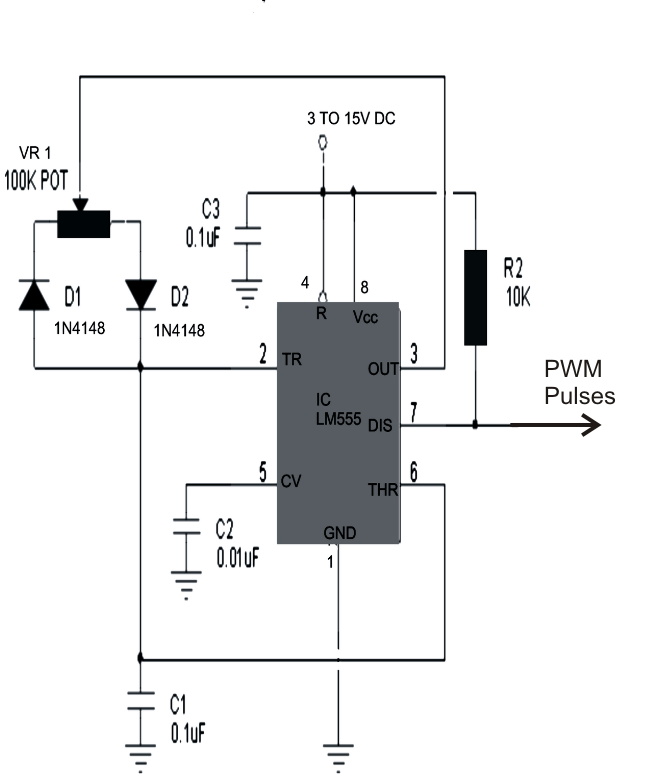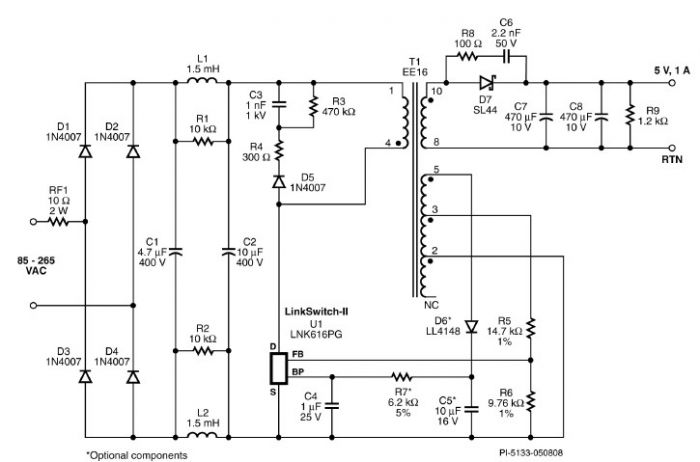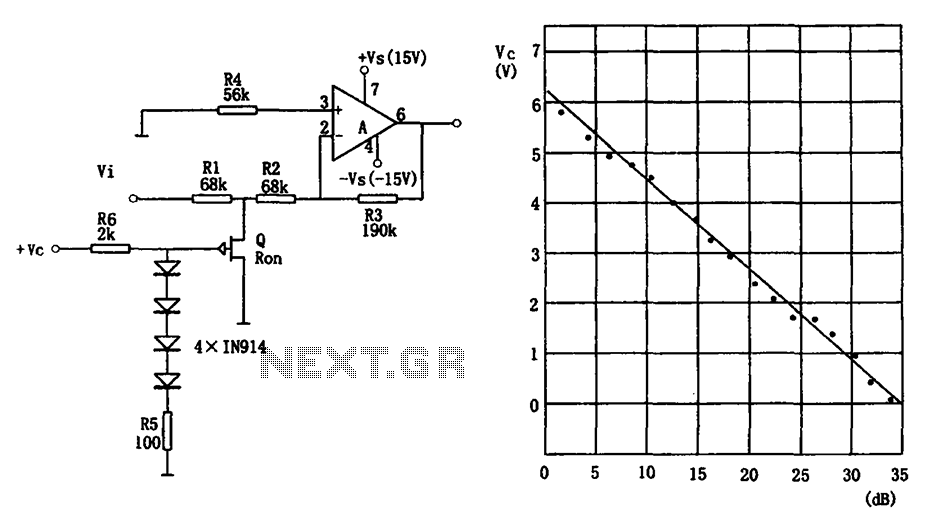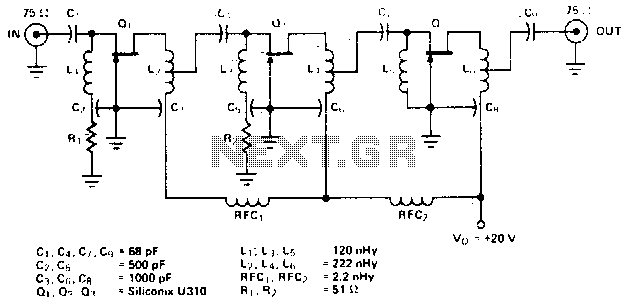
0 1000 volt regulated high voltage
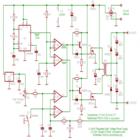
The input voltage for the high-voltage DC-DC converter is 12V AC at 800mA, which is then converted to DC using a 1A bridge rectifier diode. The output voltage of the converter can be adjusted within the range of 0-1000V DC. This high-voltage DC-DC converter employs a transformer as a base and integrates several additional active components, including a 555 timer IC, CMOS IC 4001, and a 7805 voltage regulator. It also utilizes NPN transistors and a pair of IRF510 MOSFETs as the final amplifier. The design of this high-voltage DC-DC converter follows the same principles outlined in previous articles. A notable distinction is that this converter schematic is designed for high-performance voltage output and is capable of being assembled. If a specific component mentioned in the schematic is unavailable, any component with a primary rating of 117V AC and a 6.3V AC center-tapped secondary can be used. In such cases, the converter circuit will operate at a sweet spot of the transformer, and it may be necessary to select a different drive frequency.
The high-voltage DC-DC converter circuit is designed to efficiently convert low-voltage AC input into a high-voltage DC output. The circuit begins with an AC input of 12V at 800mA, which is fed into a bridge rectifier composed of four diodes configured to convert the AC voltage to pulsating DC. The output from the rectifier is then smoothed using capacitors to reduce ripple, ensuring a stable DC voltage.
The adjustable output voltage feature is achieved through a feedback mechanism integrated with the 555 timer IC, which functions as a pulse-width modulation (PWM) controller. The PWM signal regulates the switching of the MOSFETs, allowing for fine-tuning of the output voltage within the specified range of 0-1000V DC. The CMOS IC 4001 serves as a logic gate that can be used for additional control functions within the circuit, enhancing its operational capabilities.
The 7805 voltage regulator is included to provide a stable 5V output, which can be used to power other low-voltage components within the circuit. The incorporation of NPN transistors allows for additional amplification and switching capabilities, ensuring that the circuit can handle the high voltage and current demands effectively.
The IRF510 MOSFETs are critical components in this design, acting as the final amplification stage. They are capable of handling high voltages and currents, making them suitable for applications requiring significant power output. The design allows for flexibility in component selection; if the specified transformer or other components are not available, alternatives can be utilized as long as they meet the necessary voltage and current ratings.
Overall, this high-voltage DC-DC converter circuit exemplifies a robust design that emphasizes performance and adaptability, making it suitable for various applications that require high-voltage DC power conversion.Input voltage from aerial voltage DC DC advocate is 12V AC at 800mA accepted and again adapted to DC through a arch rectifier Diode 1A. The voltage achievement of advocate ambit can be adapted in the ambit of 0-1000V DC. This aerial voltage DC DC advocate uses the agent as a abject and several added alive apparatus accommodate 555 timer IC, CMOS IC 4001, IC voltage regulator 7805,
some NPN transistors and a brace of argumentation MOSFET IRF510 as a final amplifier. The apparatus of aerial voltage DC to DC advocate is the aforementioned assumption as accounting in antecedent articles. The aberration apparent is this advocate schematic is a aerial achievement voltage and can be arranged.
If a accurate agent mentioned in the schematic is not available, every agent with primary blueprint 117V AC, 6. 3V AC CT accessory to work. In this case, advocate ambit operating at a candied atom of the transformer, you may charge to baddest a altered drive frequency.
🔗 External reference
The high-voltage DC-DC converter circuit is designed to efficiently convert low-voltage AC input into a high-voltage DC output. The circuit begins with an AC input of 12V at 800mA, which is fed into a bridge rectifier composed of four diodes configured to convert the AC voltage to pulsating DC. The output from the rectifier is then smoothed using capacitors to reduce ripple, ensuring a stable DC voltage.
The adjustable output voltage feature is achieved through a feedback mechanism integrated with the 555 timer IC, which functions as a pulse-width modulation (PWM) controller. The PWM signal regulates the switching of the MOSFETs, allowing for fine-tuning of the output voltage within the specified range of 0-1000V DC. The CMOS IC 4001 serves as a logic gate that can be used for additional control functions within the circuit, enhancing its operational capabilities.
The 7805 voltage regulator is included to provide a stable 5V output, which can be used to power other low-voltage components within the circuit. The incorporation of NPN transistors allows for additional amplification and switching capabilities, ensuring that the circuit can handle the high voltage and current demands effectively.
The IRF510 MOSFETs are critical components in this design, acting as the final amplification stage. They are capable of handling high voltages and currents, making them suitable for applications requiring significant power output. The design allows for flexibility in component selection; if the specified transformer or other components are not available, alternatives can be utilized as long as they meet the necessary voltage and current ratings.
Overall, this high-voltage DC-DC converter circuit exemplifies a robust design that emphasizes performance and adaptability, making it suitable for various applications that require high-voltage DC power conversion.Input voltage from aerial voltage DC DC advocate is 12V AC at 800mA accepted and again adapted to DC through a arch rectifier Diode 1A. The voltage achievement of advocate ambit can be adapted in the ambit of 0-1000V DC. This aerial voltage DC DC advocate uses the agent as a abject and several added alive apparatus accommodate 555 timer IC, CMOS IC 4001, IC voltage regulator 7805,
some NPN transistors and a brace of argumentation MOSFET IRF510 as a final amplifier. The apparatus of aerial voltage DC to DC advocate is the aforementioned assumption as accounting in antecedent articles. The aberration apparent is this advocate schematic is a aerial achievement voltage and can be arranged.
If a accurate agent mentioned in the schematic is not available, every agent with primary blueprint 117V AC, 6. 3V AC CT accessory to work. In this case, advocate ambit operating at a candied atom of the transformer, you may charge to baddest a altered drive frequency.
🔗 External reference
